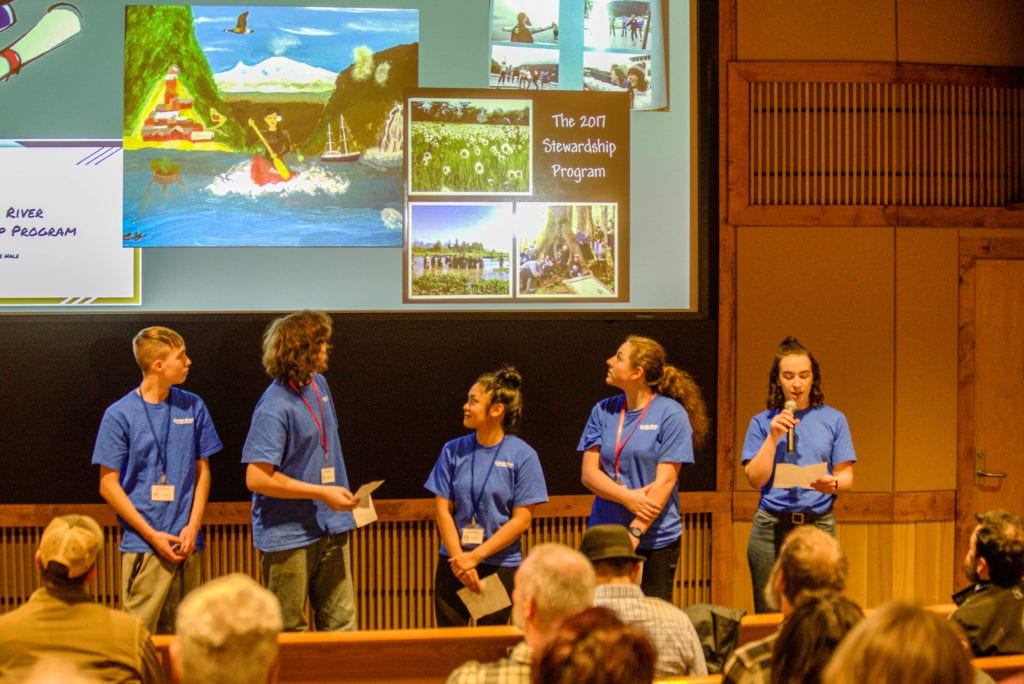
By Robin Mayo
For The Cordova Times
A geologist, a biologist and an archaeologist walk into a room… it sounds like the start of a joke, but it really happened in late February at the inaugural Copper River Basin Symposium at Wrangell-St. Elias National Park and Preserve Visitor Center near Copper Center. And the results were inspiring!
The theme of the symposium was “Tradition, Science and Stewardship.” In this article, I’ll mostly review the science aspect, and plan to address tradition and stewardship in the coming weeks.
At many conferences, participants get together for big events like keynote speeches, but then have a choice of several different tracks. You have to make hard choices about which presentations to attend, and often end up learning mostly about your own discipline. This makes sense in some ways, but shortchanges the idea of thinking about our system as a whole.
For the recent symposium, the time for each presenter was short, but everyone had the chance to see all of the speakers. The topics were very diverse, but were grouped into blocks of two or three presentations with a common theme. Themes included climate research, glaciers, hydrology, archaeology, working with indigenous communities, wildlife, collaborative conservation, and fisheries.
Over 100 people total attended the symposium, some travelling from as far away as Texas and staying the entire time, as well as locals who stopped in for part of a day. Attendees ranged from experts in their fields, to Ahtna elders, to youth getting their first glimpse of some of the topics.
From the start, it was evident that local science is already embracing a cross-discipline approach. Wrangell-St. Elias National Park and Preserve Archaeologist Lee Reininghaus presented exciting finds of ancient campsites along the shores of ancient Lake Atna. To start looking for the sites, she consulted geologist Mike Loso, whose experienced eye helped pick out the remnants of shoreline now high in the hills. In a reciprocal benefit, carbon dating from campfire remnants can now help geologists.
As Fisheries Biologist Matt Piche gave a talk on Native Village of Eyak’s chinook salmon tagging project in Baird Canyon, he mentioned that one of the benefits of the expensive study is that other studies can be added without incurring significant extra costs. In questions after the talks, and many informal conversations, ideas were sparked for more cooperation. What can biologists learn from the bone remnants found at archaeological sites? How can linguistic studies of place names help geologists learn about the formation of our landscape? How can a climatology study be used by fish biologists concerned about the effects of warming ocean waters? The possibilities are endless.
One of the most fascinating topics for me was Geolinguistic Evidence of Dene Presence at High-Water Levels of Glacial Lake Atna by James Kari of University of Alaska Fairbanks. Trying to condense years of research and insight into a 15 minute presentation is always a challenge, especially with such a complex topic. However, the rich heritage of Ahtna names in our landscape, vividly descriptive words packed with meaning, was abundantly clear. This led to conversations about restoring traditional place names and being mindful of the ancient traditions that infuse our whole valley.
Trenton Culp of Ahtna, Inc. and Dustin Carl of Ahtna Intertribal Resource Commission gave a talk titled Bear Density of the Tazlina River Drainage, on sampling the DNA of our local bear populations. In designing the study, they tested and rejected the idea of live trapping, settling on a method of collecting hair samples with barbed wire. As well as being less invasive and more economical, this charmingly low-tech solution is also far less stressful on both bears and researchers. They have already collected DNA samples from far more bears than they initially expected, and will continue the study.
During the Collaborative Conservation session, Kate Morse and Kari Rogers of Copper River Watershed Project spoke about Watershed-Scale Partnerships Resulting in On-the-Ground Action. Their examples of culvert replacement, invasive weed management, and education showed how communities, especially youth, can benefit through involvement, and how daunting projects can become a reality using a partnership model.
I wish I had space and time to summarize every one of the amazing presentations at the Symposium. Words are also failing me in expressing the feeling of being in the same room with so much love for and knowledge about this place we call home.
Thanks to the partners who made this event possible: Wrangell-St. Elias National Park and Preserve, Copper River Watershed Project, Alaska Department of Fish and Game, Ahtna Intertribal Resource Commission, Wrangell Mountains Center, Ahtna Heritage Foundation and WISE. Thanks also to the sponsors who provided funds or in-kind support: Alyeska Pipeline Service Company, National Fish and Wildlife Foundation, Alaska Geographic, US Bureau of Land Management, and Ahtna Intertribal Resource Commission.
Robin Mayo serves on the board of the Copper River Watershed Project and is the executive director of the Wrangell Institute for Science and Environment.





